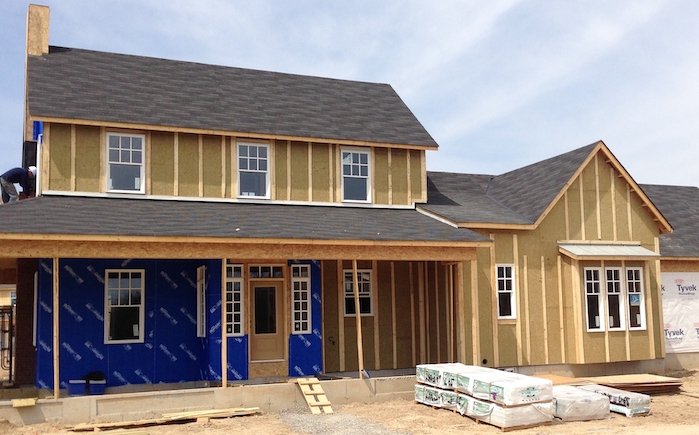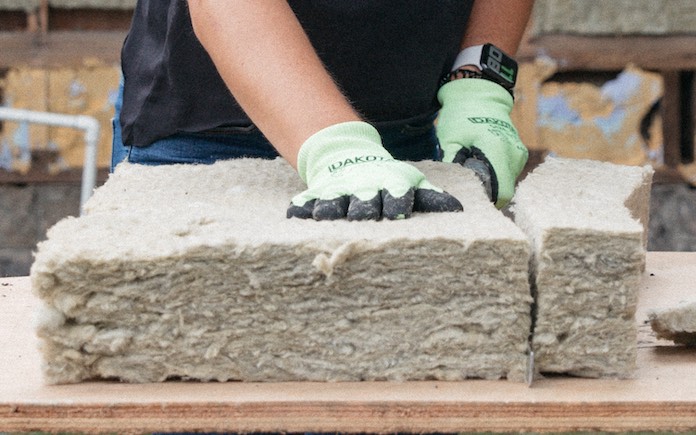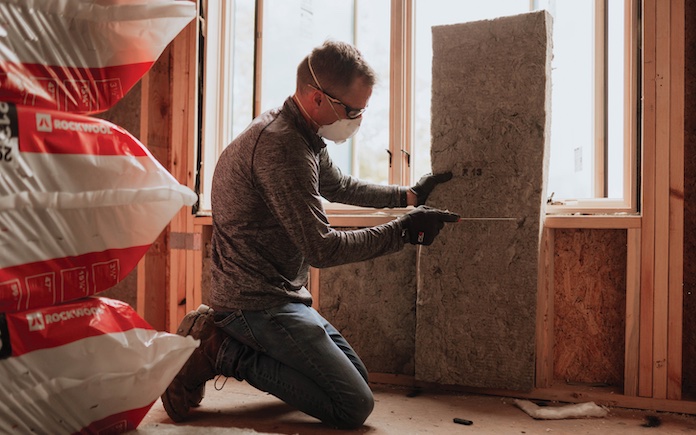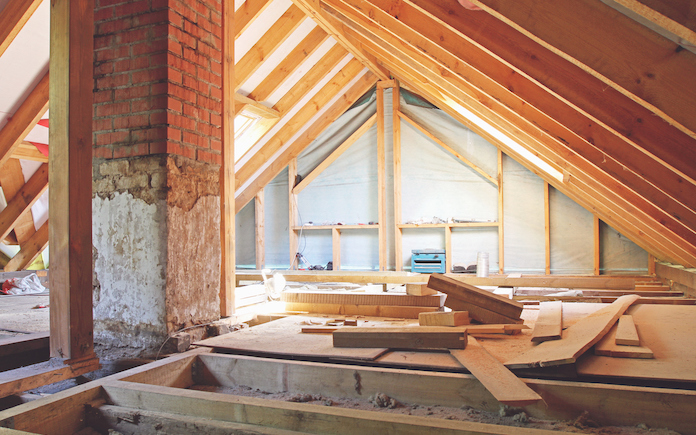Stucco Over Continuous Mineral Wool Insulation

When tackling indoor home improvement projects, look at your insulation. Replacing it with stone wool insulation can make your home safer, more comfortable and more energy-efficient.
This post is sponsored by ROCKWOOL .

Why Insulation Matters
Did you know that 9 out of 10 homes are under-insulated?
Proper insulation keeps your family comfortable and helps with your home's energy efficiency.
In fact, the EPA estimates that adding insulation to your home, especially in the attic, can save you up to 15 percent each year on your energy bills. This could save you around $200 annually.
Extra insulation can also lessen the noise throughout your home and stone wool insulation in particular can add an extra layer of protection against house fires.

What's Stone Wool Insulation?
Stone wool insulation is fire-resistant and non-combustible, giving your family more time to safely escape a house fire.
In addition, this material is moisture-resistant, so it won't promote mold or mildew growth.
And it has excellent sound absorption qualities. So, you won't have to worry about hearing the washer and dryer in the living room or loud music from your teenager upstairs.
ROCKWOOL, a leading manufacturer, offers many types of stone wool insulation for external and internal walls, attics and basements for both new builds and renovations. You can buy ROCKWOOL insulation at most home centers.
For more information, visit ROCKWOOL's website.
You can also check out this video!
Installing Stone Wool Insulation
Installing insulation can be intimidating, even to experienced DIY-ers, but stone wool is easy to install. Simply cut it with a serrated bread knife to fit it in all of your walls' nooks and crannies. It's safe to handle, but you should still wear gloves, long sleeves and a mask to avoid possible irritation. Then, follow the package's directions for proper application.
Here are key spots in your home to install a layer of ROCKWOOL insulation.

Exterior Walls
External walls envelop your home, protecting everything inside.
They also cover the greatest surface area, making them a prime area for heat loss. About a third of all heat lost in an uninsulated home escapes through walls.
If you have a wood-framed home, ROCKWOOL's stone wool insulation adds extra protection in case of a fire. Installed around wooden beams, and between wall studs and rafters, stone wool insulation can withstand temperatures of 2150°F. With such fireproofing, the likelihood of your home being damaged dramatically decreases.
For exterior cavity walls, using exterior continuous insulation, like ROCKWOOL Comfortboard 80, underneath the cladding of the home can improve performance even more, by reducing thermal bridging through the studs.
Some overall tips:
- Measure your walls: Size up your external walls to ensure you have enough installation material.
- Choose the right product: Assess your external wall's shape, size and material to help choose the best insulation product and installation method.
- Choose partial or full-fill cavity insulation: Which is most suitable can depend on your local regulations or building traditions.

Interior Walls
Because insulation is typically used to keep outside air from getting in, people may overlook insulating interior walls. However, adding extra insulation to these inside walls can make your home more soundproof.
For example, ROCKWOOL Safe'n'Sound stone wool batt insulation reduces sound transmission and improves your home's fire-resistant qualities.
Key tips for interior wall insulation:
- Choose your material: ROCKWOOL interior wall insulation is available in 3-inch thick batts for walls and 6-inch batts for floors and ceilings for easier installation.
- Measure the area – Interior wall insulation will take up space in the room where it's installed. Consider the insulation's depth and how it will affect your space.
- Fix prior problems – When installing dry lining, fix cracks in existing walls to stop rainwater from coming in. ROCKWOOL insulation is water-repellent, but it's still essential to first fill cracks.
- Remove wall fittings – Before erecting a stud wall, remove radiators, decorations or other fittings that would hamper its effectiveness.

Attic
Air can easily escape through your attic if it doesn't have enough insulation, making your air conditioning and heating systems have to work harder, resulting in energy waste and discomfort.
Attic insulation prevents heat from escaping by providing a barrier of thermally efficient material between the attic space and the roof.
ROCKWOOL Comfortbatt semi-rigid stone wool thermal batt insulation has a unique flexible edge that allows for easy installation and helps prevent over-compression to maintain its R-value.
An attic designed as a living space needs insulation in the top rafters as well as the floor. Attics that just serve as storage only need insulation on the lower joists or floor.
Installing attic insulation is a DIY-friendly project, but call a local professional for optimal performance and peace of mind. They can develop the best insulation strategy based on the environmental factors of your space, like whether or not it's air-conditioned or how much ventilation the space has.
If you're thinking about insulating your attic, here are some key considerations:
- Ensure you have accurate measurements of the area you are insulating
- Inspect all joists, structural elements and electrical cabling to ensure proper condition
- If rot, damp or moisture is present, consult a professional contractor to perform an investigation before progressing
- Evenly distribute insulation material and avoid open joints between products
- Avoid squashing loft insulation, as crushed air pockets within the insulation can affect thermal performance.
Conclusion
Stone wool insulation improves your home's energy efficiency by creating a thermal barrier between its interior and exterior.
Because it's made from molten rock, minerals and steel slag, it's resistant to mold and mildew growth and non-combustible, resisting temperatures up to 1800 degrees Fahrenheit.
Inside your home, high-density stone wool insulation can reduce room-to-room noise.
The more insulation you have in your home, the better, but key areas to focus on are the exterior walls, attic and interior walls.
To learn more about stone wool insulation and ROCKWOOL products, check out the manufacturer's Advice and Inspiration page.
Further Reading
- Insulation Solution for a Safer Home
- How Much Attic Insulation Do You Need?
- Everything You Need to Know About Insulation's R-Value
Source: https://todayshomeowner.com/why-we-use-stone-wool-insulation/
Post a Comment for "Stucco Over Continuous Mineral Wool Insulation"